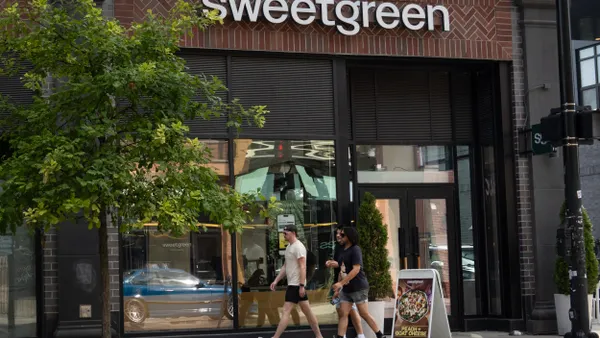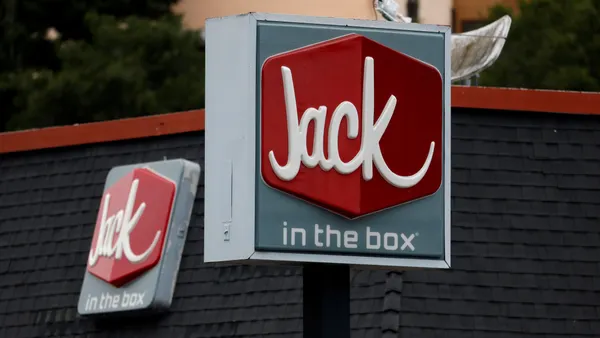Dive Brief:
- Chipotle has opened two new restaurants designed with all-electric equipment and systems intended to maximize energy efficiency in a test of a “responsible” design, according to a press release published Tuesday.
- The new store design is intended to help Chipotle cut its direct and indirect greenhouse gas emissions in half by 2030 as compared with a 2019 baseline.
- Chipotle says it will power those restaurants in part with rooftop solar, where feasible, and using renewable energy purchased through certified renewable energy credits.
Dive Insight:
The first two such stores are already open, one in Gloucester, Virginia, and a second in Jacksonville, Florida, with a third coming later in 2023 in Castle Rock, Colorado. By 2024, Chipotle aims to have at least 100 new units with all-electric equipment and at least some of the design’s other elements.
In addition to the all-electric stores, Chipotle is working to install energy management systems to ensure the efficiency of heating, cooling and refrigeration systems; considering the use of renewable resources in logistics; and investing in plans to slash emissions in its beef and dairy supply chains, according the press release.
The company also announced it will air a minute-long TV ad titled “Human Nature,” which highlights that humans are, in fact, biological organisms with visual similarities to elements of the environment, in addition to being consumers of fast-casual food.
In 2019, Chipotle had about 2,622 units, according to its annual report, and the brand currently plans to reach 7,000 units in North America at some point in the future, a 266% unit count growth against the 2019 baseline.
It’s unclear if the company can achieve a 50% reduction in emissions alongside such dramatic growth. Chipotle’s emphasis on drive-thru units in suburban markets targets for future development could undercut sustainability, given the higher per capita carbon emissions of suburbs, and the long tailpipe problem, in which electric car adoption may not actually reduce emissions given the sources of American electricity. According to Bloomberg, renewable energy credit schemes, like the one employed by Chipotle, may lead businesses to overestimate their emissions reductions. The company did not immediately respond to request for comment on these challenges.
Chipotle plans to boost its purchase of local produce from about 36 million pounds in 2022 to 36.4 million pounds in 2023, an increase of about 1%. The brand defines local produce as food produced within 350 miles of a distribution center. To put that geographic scale in perspective, if a distribution center were located in Washington D.C., food from as far away as Charlotte, North Carolina, and Toronto would count as local produce.
Chipotle also plans to move toward biodegradable versions of its service ware, including bowls, cutlery and cups, according to the press release.
The fast-casual giant is not alone in such efforts, Yum Brands announced its intent to reduce packaging waste and improve sustainability in a March 28 blog post, and Chopt opened what it called an eco-conscious store last summer, though the eco-consciousness largely consisted of improved HVAC efficiency and a reduced footprint. McDonald’s has also signaled its intent to purchase more renewable energy, striking direct agreements with solar energy producers to power some stores and warehouses.
Chipotle did not immediately respond to a request to explain how it estimated per-store greenhouse gas emissions.












